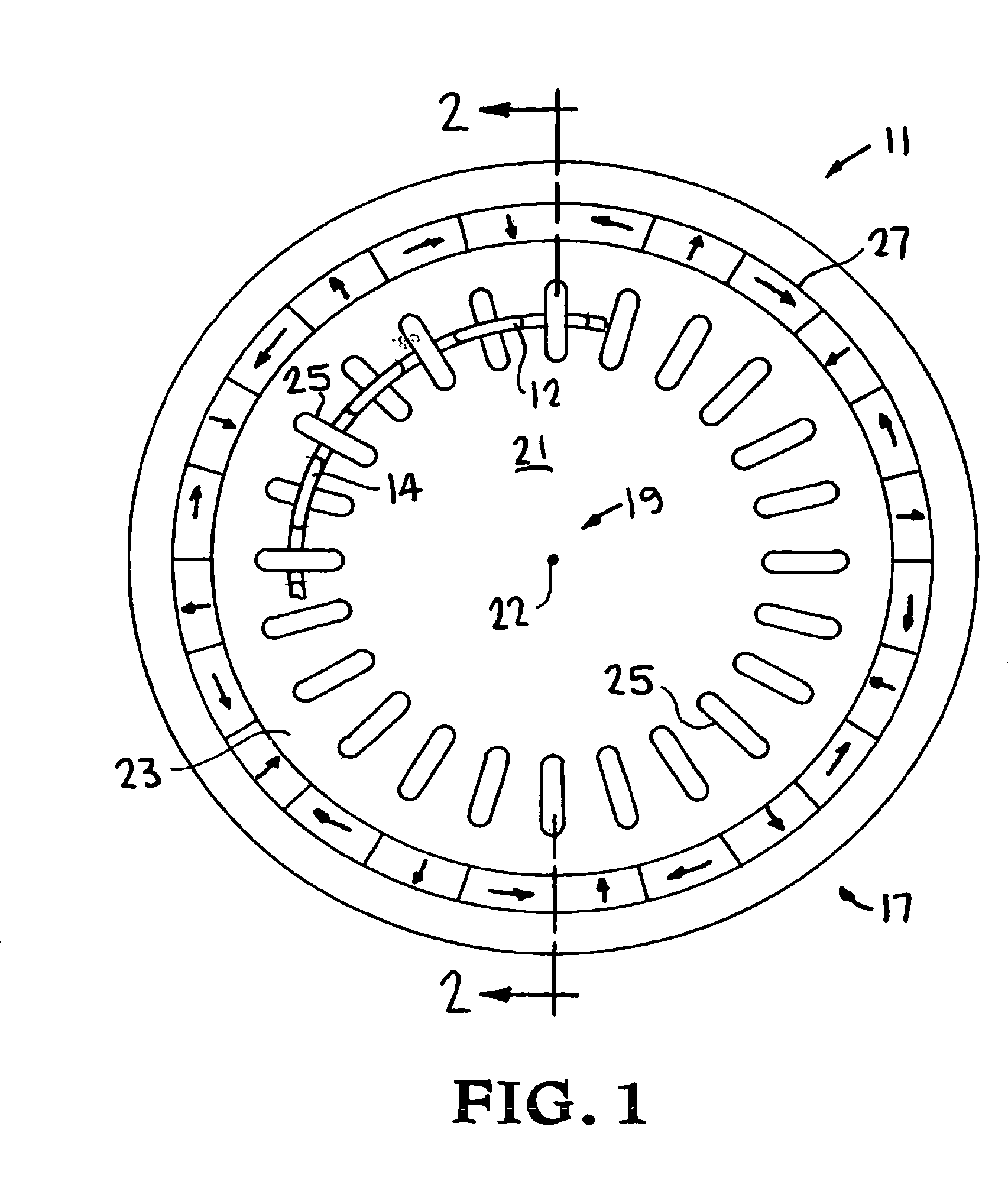Passive magnetic bearing for a motor-generator
a magnetic bearing and motor-generator technology, applied in the field of magnetic bearings, can solve the problems of poor adaptability of mechanical bearings, mechanical bearings, air bearings, etc., to use in vacuum, reduce unit efficiency, and friction loss
- Summary
- Abstract
- Description
- Claims
- Application Information
AI Technical Summary
Benefits of technology
Problems solved by technology
Method used
Image
Examples
Embodiment Construction
[0019]Turning to the drawings, FIG. 1 is a section front view of motor-generator 11 including conductive lap windings 12, 13, 14 and 15 of the present invention. Motor-generator 11 also includes rotor 17 rotating its longitudinal axis of symmetry 19 and around stator 21. As shown in FIG. 1, when rotor 17 is in equilibrium, axis 19 is collinear with longitudinal axis of symmetry 22 of stator 21. Radial gap 23 separates rotor 17 and stator 21. Gap 23 is uniform and cylindrical when rotor 17 is in its equilibrium position, and becomes asymmetrical when rotor 17 is displaced therefrom.
[0020]As also shown in FIG. 2, a section view taken along line 2—2 of FIG. 1, stator 21 includes conductive rectangular loops 25. Rotor 17 includes annular Halbach magnet array 27 that generates a magnetic field radially inward towards axis 19, having lines of induction that intersect lap windings 12, 13, 14 and 15, and loops 25. A discussion of Halbach magnet arrays is provided in K. Halbach, “Application...
PUM
 Login to View More
Login to View More Abstract
Description
Claims
Application Information
 Login to View More
Login to View More - R&D
- Intellectual Property
- Life Sciences
- Materials
- Tech Scout
- Unparalleled Data Quality
- Higher Quality Content
- 60% Fewer Hallucinations
Browse by: Latest US Patents, China's latest patents, Technical Efficacy Thesaurus, Application Domain, Technology Topic, Popular Technical Reports.
© 2025 PatSnap. All rights reserved.Legal|Privacy policy|Modern Slavery Act Transparency Statement|Sitemap|About US| Contact US: help@patsnap.com



